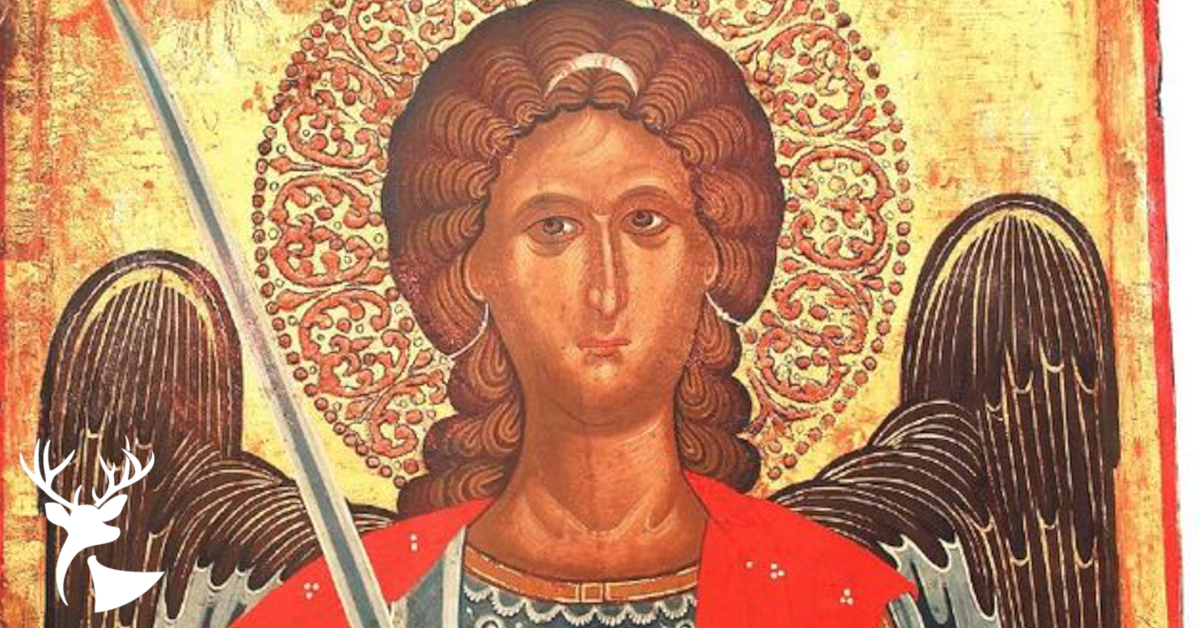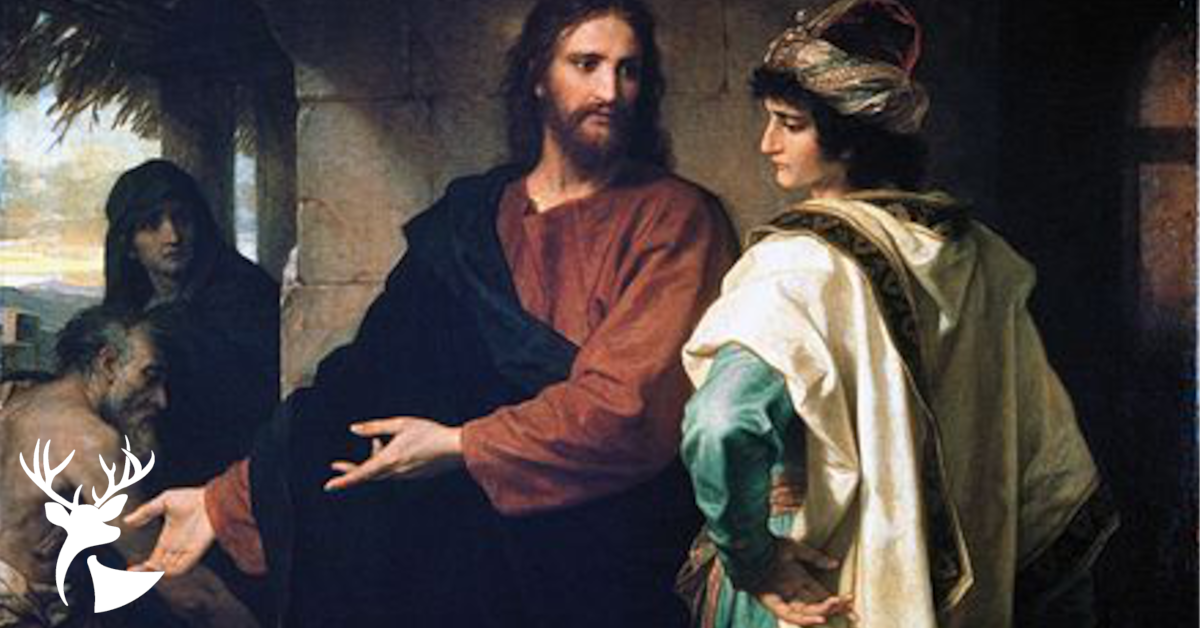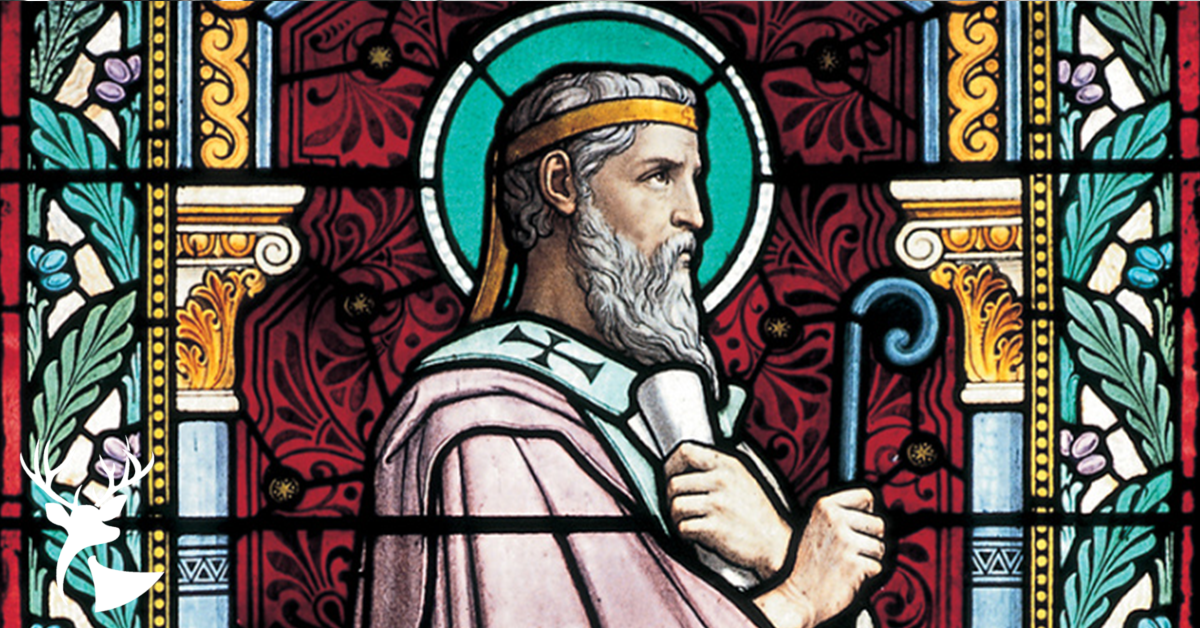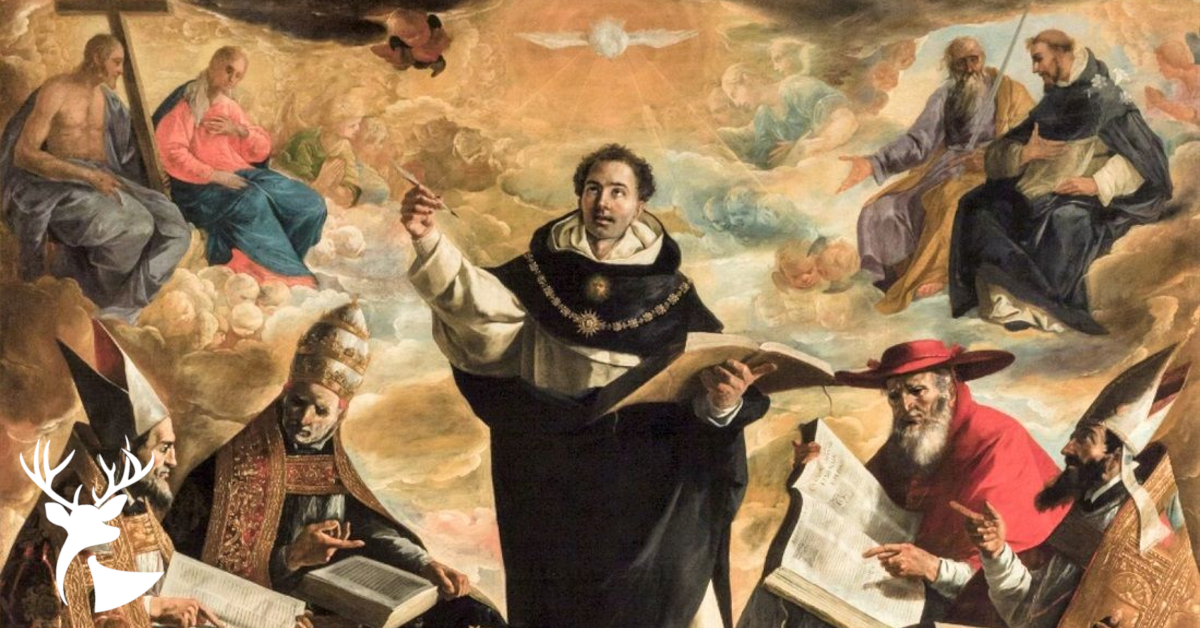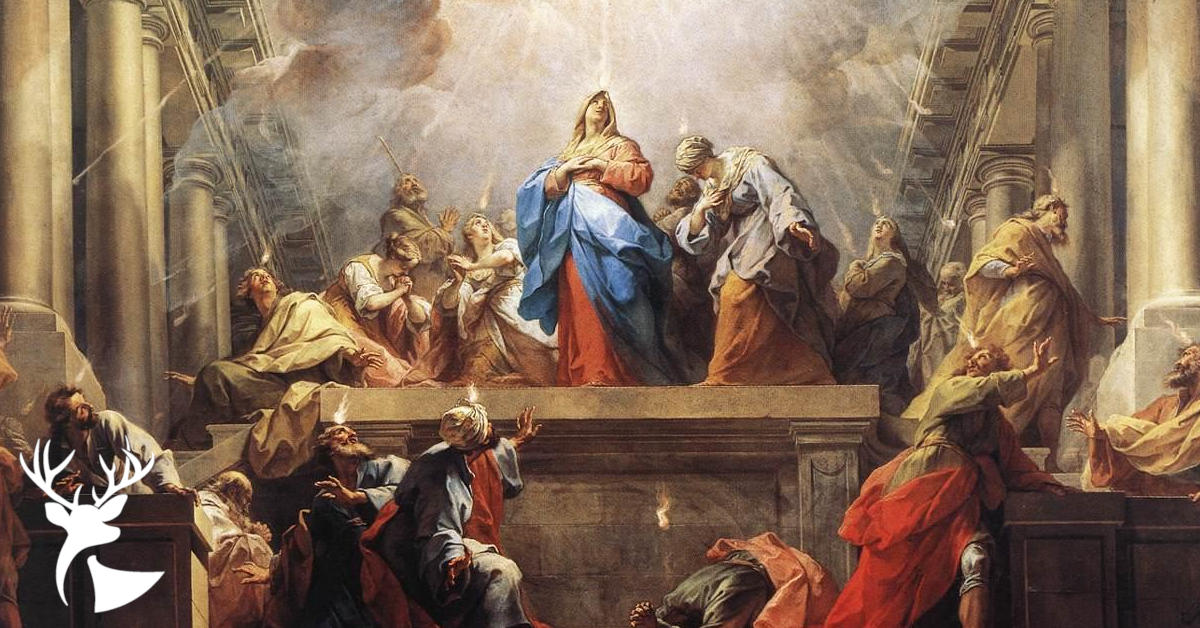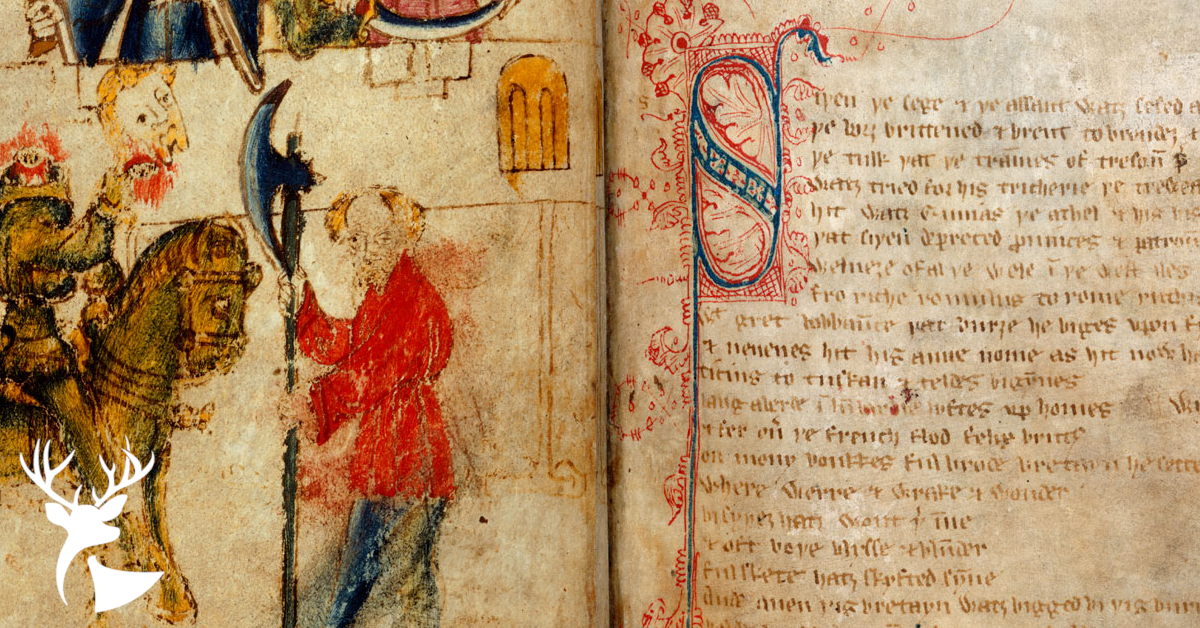
On Faith & Fortitude: The Shield of Sir Gawain
By Dcn. Harrison Garlick
September 16, 2022
Given on Sunday, August 7, 2022, the 19th Sunday of Ordinary Time, at the Parish of Christ the King in Tulsa, Oklahoma
← Return to HomiliesStay Connected!

On Faith & Fortitude: The Shield of Sir Gawain
By Dcn. Harrison Garlick
September 16, 2022
Given on Sunday, August 7, 2022, the 19th Sunday of Ordinary Time, at the Parish of Christ the King in Tulsa, Oklahoma
✠ In the name of the Father and of the Son and of the Holy Spirit ✠
On New Year’s Eve, King Arthur was with his knights and other guests at the round table. As was his custom, King Arthur would not begin to eat until he had heard some story of wonder and renown. Suddenly, a man on horseback came riding into his hall. He was a giant clothed completely in the color green bearing a huge, ornate axe. In fact, to the amazement of the guests, the half-giant knight had skin and hair colored green—even his horse was green. Known aptly as the “Green Knight,” he issued a challenge to those brave heroes in Arthur’s hall: one of them would be permitted to strike the Green Knight once with his own axe, and then the Green Knight would strike him once in return.
The hall was silent before the massive, green man. Eventually, Sir Gawain stood before the Green Knight and brokered terms of the holiday game. Sir Gawain would strike the Green Knight and then, a year later, Sir Gawain would have to journey to the chapel of the Green Knight to stand and receive his strike.
Sir Gawain lifted the axe and swung with all his might—the head of the Green Knight went rolling across the floor. The game had apparently come to its predictable end. Yet, to the amazement of King Arthur’s court, the headless knight walked over, picked up his head, and galloped away, reminding Sir Gawain he would see him one year hence.
In this 14th century anonymous poem, Sir Gawain and the Green Knight, our hero must find the fortitude to journey and face his green foe. While his overall pilgrimage is certainly worth reading (please do not watch the 2021 movie), what is most apt for us is how Sir Gawain found the fortitude he needed to start his journey. The author spends a great amount of time telling us about Sir Gawain’s armor, but most notable for us is his shield. On the inside of his shield, Sir Gawain has painted a picture of the Blessed Virgin Mary. In this manner, when he lifts his shield in battle, her eyes will meet his – and he will be encouraged. In the maternal eyes of Mary, he will find the fortitude necessary to do what is asked of him.
Sir Gawain invites us to understand that fortitude is necessary for a virtuous life. It does not matter if you are smart enough to understand what is right if you are too afraid to do it. How many of us know what the Gospel demands of us but buckle under the pressure of our culture?
Though our faith makes demands upon our fortitude, it also helps it. Faith perfects or strengthens our fortitude. This interplay between faith and fortitude is reflected in today’s Scripture readings.
In the first reading, the author praises the Jews whose faith in God allowed them to have the bravery to endure hardships and await justice (Wis 18:6-9). The author states, “Your people awaited the salvation of the just and the destruction of their foes”—their faith allowed their fortitude to hold.
In the second reading, we see how the faith of Abraham gave him the courage to leave his homeland and endure hardships for the sake of the vocation to which God had called him (Heb 11:1-2, 8-19). The greatest test of which was God’s call for Abraham to sacrifice his only son—Isaac. Abraham’s fortitude, perfected by his faith, allowed for a narrative that would foreshadow God the Father sending His own Son to be sacrificed.
Third, in today’s Gospel, Christ tells us to “[g]ird your loins and light your lamps”—to be brave and to have faith (Lk 12:32-48). For to us, His “little flock,” He has given the Kingdom, if we can endure the hardships of the world for the sake of the Cross.
After linking the virtues of faith and fortitude, our Gospel today ends with a warning. Alluding to the end times, Christ tells us that when the Master comes, He will throw the wicked servant amongst the “unfaithful” for punishment. A clear analogue to hell. Yet, He says of the servant who knew the will of his Master but did not do it—that servant will be saved but punished severely. A clear analogue to purgatory.
Christ’s warning is clear: We will be disciplined—either by our own will in this life or by the Divine Will in the life to come. Knowing the will of God is not enough. We must have the fortitude to live the Gospel—to be mocked, to be alienated, to endure hardship all for the sake of Jesus Christ.
May we, like Sir Gawain, find encouragement in Mother Mary to live the life expected of us—a life of faith and fortitude.
✠ In the name of the Father and of the Son and of the Holy Spirit ✠
More Reading

Dcn. Harrison Garlick serves as a Great Books Tutor for the Alcuin Institute, and is the Chancellor of the Diocese of Tulsa.


